







Nel descrivere la pittura di Dora Bittau non si può prescindere dal
segnalare e rapportarsi alla sua lunghissima militanza artistica di
scenografa e costumista nel cinema, nei teatri ed alla televisione
del suo paese d'origine, la Bulgaria. La sua pittura ha una genesi
simile al profondo ed accurato studio che si effettua ogni qualvolta
si inizia a lavorare ad un progetto teatrale o cinematografico sia che
si tratti della serie dei Re Bulgari, sia che si cimenti nella vita di Cirillo
e Metodio e S. Ignazio Loyola, o che rilegga con occhio moderno la
tradizione classica del ritratto o della Madonna con bambino.
C'è sempre un lavoro profondo sui testi letterari antichi e sull'iconografia.
Si respira nelle sue creazioni l'aria di testi ed autori che lei ha a lungo
frequentato sui palcoscenici da Shakespeare a Gogol, da Brecht a Bulgakov.
Così come appare evidente la sua passione per il teatro di marionette ed
il cinema di animazione. Prendiamo ad esempio i Santi fratelli Cirillo e
Metodio: la loro valenza cosmopolita da uomini del IX secolo è
perfettamente riletta dalla Bittau nelle sue opere.
I dipinti sono delle icone, ma immaginate come in sogno, filtrate da una
cultura millenaria stratificata nella memoria collettiva , e raccontano
storie con molti personaggi con uno sviluppo da storytelling.
In Dora c'è l'intensità di una spiritualità che cancella la storia per crearne
una nuova fatta di stratificazioni secolari, metabolizzate e riformulate in
modo originale. Come quando entriamo in chiese che ci regalano su pareti
contrapposte opere di secoli diversi e di culture altre, mettendo le une
accanto alle altre, facendo affiorare parti recuperate di restauri di affreschi
bizantini, pitture tardo medievali o rinascimentali di Simone Martini o
Pietro e Ambrogio Lorenzelli, opere barocche, mentre alle parete o sopra
gli altari troneggiano madonne occidentali o santi antichi in abiti di altri
tempi, appoggiati a colonne greco romane o turco bizantine che tentano
di conquistare con vigoria lo spazio che occupano.
Ma è nel colore che la qualità della Bittau si esalta. La policromia bizantina
si sposa ad un uso modernissimo e scintillante del colore. Così come la
rilettura delle immagini tradizionali unisce in se il medioevo, la creatività
protogiottesca, l'anima slava e orientale, la grande tradizione
rinascimentale e barocca, la contemporaneità impressionista e surreale,
la finta naïveté alla Botero senza l'obesità disturbante, e la monocromia
pompeiana. Il rosso fa da padrone, certo, ma non mancano degli
originalissimi verdi, celesti, ocra, ori, blu…
Ricordo che alcune opere di Dora Nikolova Bittau sono state le immagini
di alcune manifestazioni nazionali dello SNAD e della fondazione teatrale
Favi, cioè le rassegne “Schegge d'Autore” e “Luce sul proscenio”.
Infine i Santi Cirillo e Metodio scacciati dalla Moravia, e tutti i trionfanti
ed orgogliosi Re Bulgari ci fanno ricordare ancora una volta, e se ce ne
fosse ancora bisogno, ma purtroppo pare di sì, che l'identità culturale è
qualcosa che non si può cancellare o nascondere, per esempio con una
guerra. E nel rivedere le immagini quasi infernali di guerrieri a volte
attoniti, a volte satanici a volte angelicati, viene da ripensare alla frase
tratta dai Prolegomeni al Vangelo del IX secolo che è dipinta su di
un'opera di Dora:
 Short Artist's Biography
Short Artist's Biography
 Short painter's Biography
Short painter's Biography
 St. Ignatius-Pamplona-Oregon
St. Ignatius-Pamplona-Oregon
 CRUCIFIX-Georgetown University, Copley Crypt
CRUCIFIX-Georgetown University, Copley Crypt
 Saints Cyril and Methodius
Saints Cyril and Methodius
 St. Ignatius Loyola, St. Francis Xavier, St. Peter Faber
St. Ignatius Loyola, St. Francis Xavier, St. Peter Faber
 The Chapel of St. Ignatius, Seattle University
The Chapel of St. Ignatius, Seattle University
 Whim in white
Whim in white
 NATIONAL THEATER "IVAN VAZOV", Sofia: "Mary Stuart" (Schiller) costumes
NATIONAL THEATER "IVAN VAZOV", Sofia: "Mary Stuart" (Schiller) costumes
 NATIONAL THEATER "IVAN VAZOV", Sofia: "Mary Stuart" (Schiller) costumes (for print)
NATIONAL THEATER "IVAN VAZOV", Sofia: "Mary Stuart" (Schiller) costumes (for print)
 BULGARIAN NATIONAL TELEVISION, costumer designer for "A historiy of perpetual living from day to day"
BULGARIAN NATIONAL TELEVISION, costumer designer for "A historiy of perpetual living from day to day"
 TELEVISIONE NAZIONALE BULGARA: costumi per "Storia di un perpetuo vivacchiare"
TELEVISIONE NAZIONALE BULGARA: costumi per "Storia di un perpetuo vivacchiare"
 TELEVISIONE NAZIONALE BULGARA: costumi per "Storia di un perpetuo vivacchiare" (versione Stampa)
TELEVISIONE NAZIONALE BULGARA: costumi per "Storia di un perpetuo vivacchiare" (versione Stampa)
 TEATRO NAZIONALE "IVAN VAZOV", Sofia: costumi per "Maria Stuarda" (Schiller)
TEATRO NAZIONALE "IVAN VAZOV", Sofia: costumi per "Maria Stuarda" (Schiller)
 TEATRO NAZIONALE "IVAN VAZOV", Sofia: costumi per "Maria Stuarda" (Schiller) (versione Stampa)
TEATRO NAZIONALE "IVAN VAZOV", Sofia: costumi per "Maria Stuarda" (Schiller) (versione Stampa)
 breve nota biografica
breve nota biografica
 nei mezzi di comunicazione
nei mezzi di comunicazione
 Ritratti (Portraits)
Ritratti (Portraits)
 Zarevo nad Drava (Dawn Over the Drava)
Zarevo nad Drava (Dawn Over the Drava)
 I re medievali bulgari
I re medievali bulgari
 SS. Cirillo e Metodio
SS. Cirillo e Metodio
 Sofia saluta Roma III
Sofia saluta Roma III
 "Le Nozze di Cana" e "Assunzione di Maria"
"Le Nozze di Cana" e "Assunzione di Maria"
 PREMIO CARRIERA
PREMIO CARRIERA
 Vincenzo SANFILIPPO recensione
Vincenzo SANFILIPPO recensione
 Antonella Pagano: “E’ l’arte la via del bene”
Antonella Pagano: “E’ l’arte la via del bene”
 Intervista RADIOVATICANA
Intervista RADIOVATICANA
 articolo Girodivite
articolo Girodivite
 Нещо за мен и КИНОТО
Нещо за мен и КИНОТО
 Дора и БЪЛГАРСКАТА НАЦИОНАЛНА ТЕЛЕВИЗИЯ
Дора и БЪЛГАРСКАТА НАЦИОНАЛНА ТЕЛЕВИЗИЯ
 Дора и ТЕАТЪРА
Дора и ТЕАТЪРА
 НАГРАДА ЗА КАРИЕРА
НАГРАДА ЗА КАРИЕРА
 Ренато Джордано. Антологична изложба на Дора Н. Битау
Ренато Джордано. Антологична изложба на Дора Н. Битау
 Intervista RADIOVATICANA
Intervista RADIOVATICANA










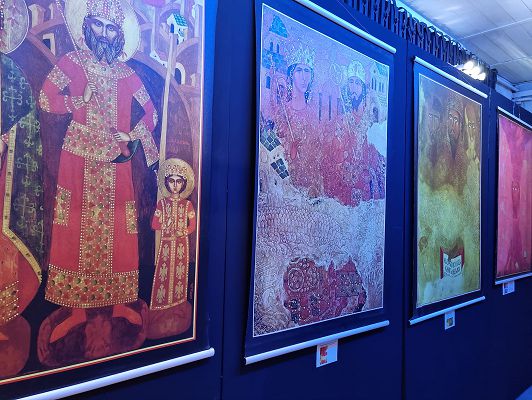















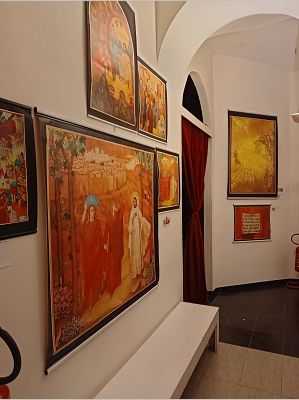

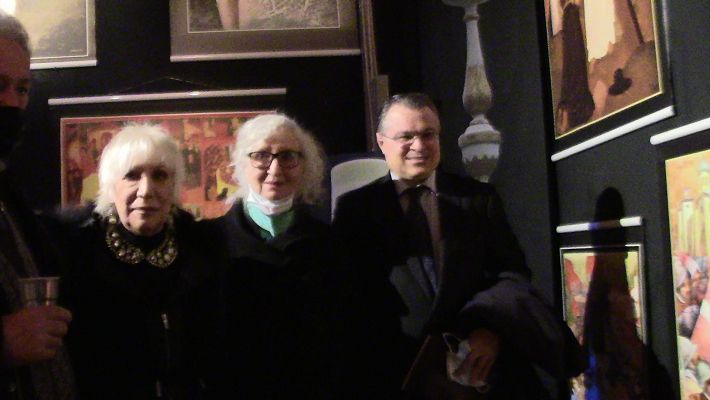




Sono nudi senza libri tutti i popoli
Non potendo lottare senza armi
Con il nemico delle nostre anime.
Renato Giordano
Roma, marzo 2022















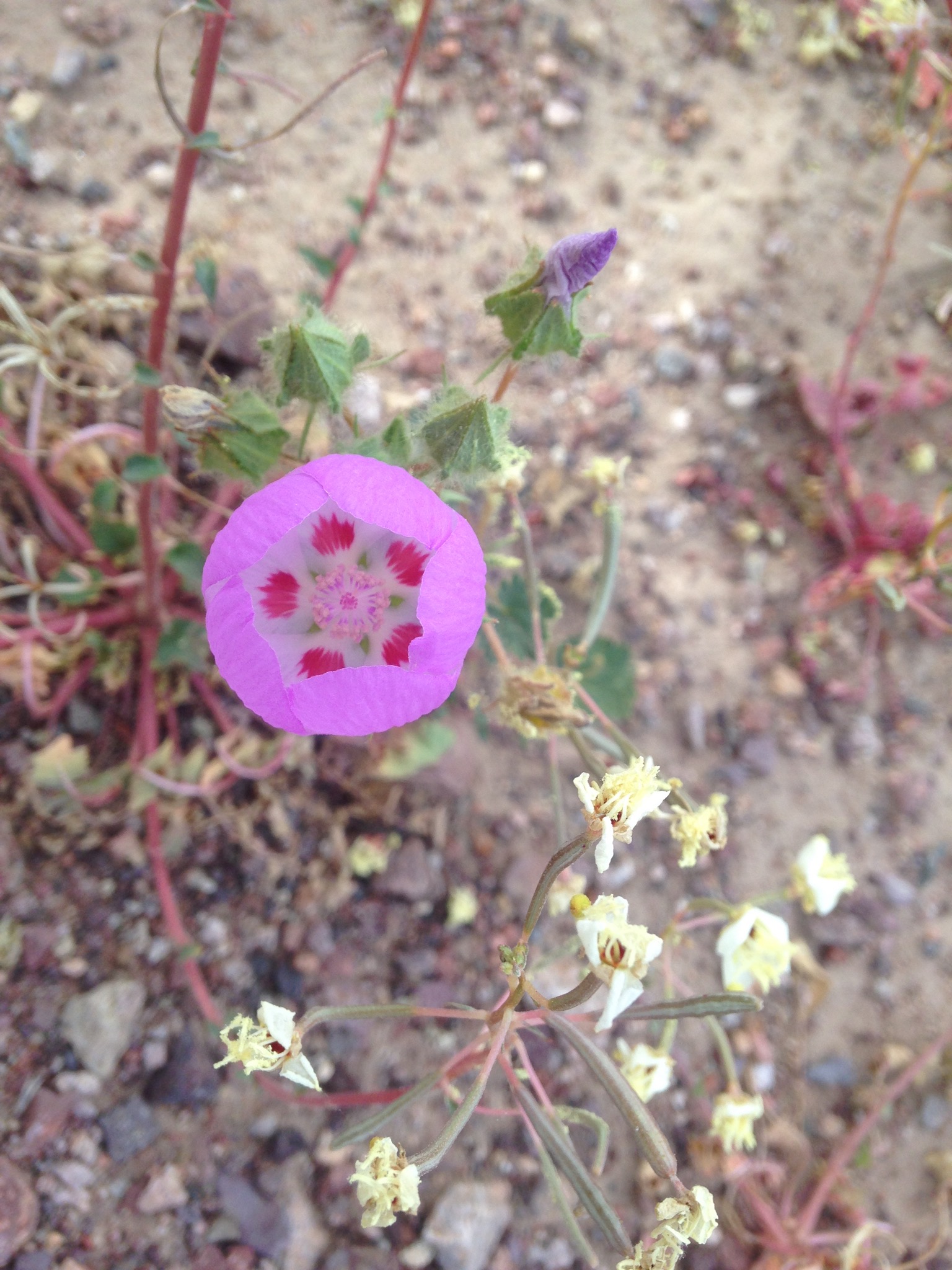


































































































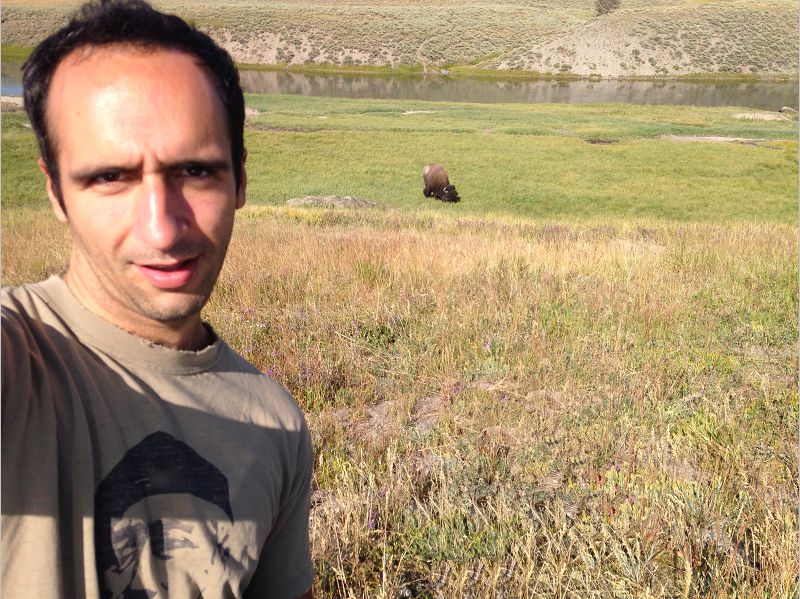
































_800_599.jpg)


_800_599.jpg)
_800_1064.jpg)

_800_1064.jpg)
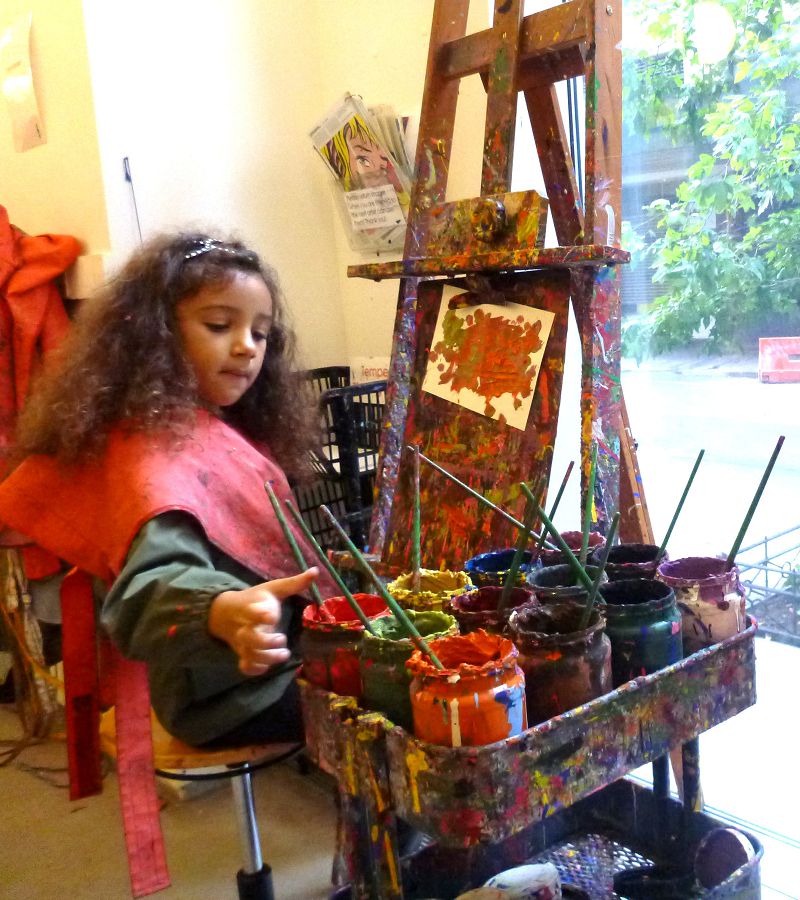







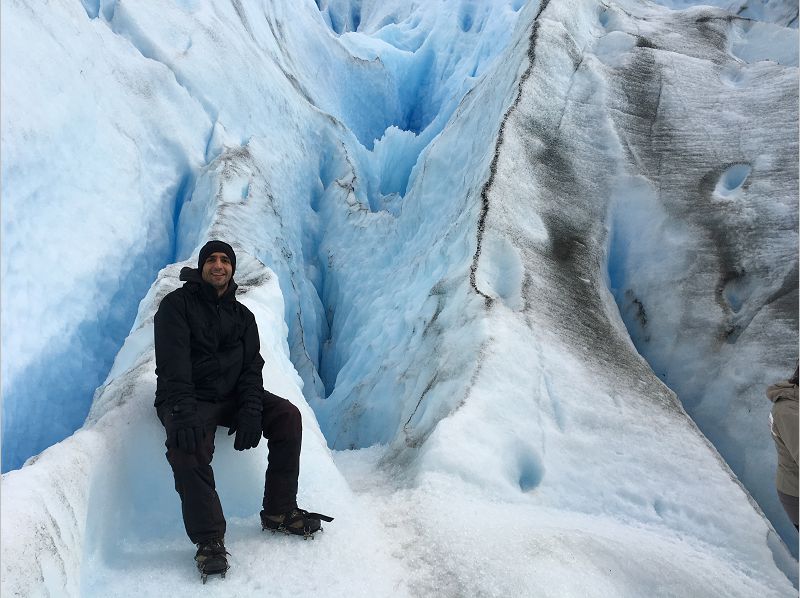

























I am particularly interested in teaching classes on operating systems, security and networking. I gave lectures
on these topics both at Stanford and UCL and found it highly rewarding. When teaching classes I try to keep a
good balance of concepts and details so that everyone can follow the concepts and more advanced students are
kept interested with the details. I also like to keep the content as real and current as possible, showing what is
being done both in industry and research today. For example, after explaining classic buffer overflows, I will
deepen the discussion by explaining how the latest iPhone jailbreak works and what the latest solutions out of
research are. Similarly I like to create projects that are not overly simplified for the sake of learning the particular
task in hand. For example, writing an exploit for the latest vulnerability in the Linux kernel as opposed to a toy
application is more effective in teaching students all the details and nuances that occur in practice. My research
gives me the background necessary to package complex attacks into simpler individual pieces and accessible lab
assignments. My goal is to teach the concepts of computer security, which will stay with students forever. I
then bridge the gap between concepts and reality both to keep students interested and to show them real-world
complexity.
I enjoy one-on-one student mentoring as it lets me tailor my approach toward the particular student to try to
achieve the best possible outcome. At UCL I advised both graduate and undergraduate students on their final
year projects. One student worked on introducing the idea of a "Virtual Access Point" (VAP) and building its first
implementation, which allowed creating multiple WiFi access points (or even clients) using a single wireless card.
Today, VAPs have become widespread and many implementations exist. Another student worked on building the
first open-source Bluetooth sniffer, using GNU radio. Many have used the work to study the security of Bluetooth
and it now resulted in Ubertooth, a specialized hardware product dedicated entirely to Bluetooth sniffing. In both
cases, I presented the students with the problem, and as they worked toward a solution, I guided them through
any road blocks.
At Stanford I advised students and helped them shape and channel their ideas to produce high quality papers.
Adam Belay created Dune, a system that lets applications safely access privileged CPU features using hardware
virtualization. This resulted in an OSDI paper. Ali Mashtizadeh created Ori, a file system that makes files
available on all configured devices, with versioning, history and easy sharing. This resulted in an SOSP paper.
In both cases I guided the students end-to-end from inception, to helping design and implement the system, to
finding a compelling way to present their story for publication, to writing the paper, to preparing the conference
talk. Quinn Slack worked on tcpcrypt and integrated it with HTTP digest authentication using PAKE. This results
in mutually authenticated encrypted connections for websites with passwords, without requiring certificates.
My overall strategy with students is to get them excited. This has multiple components. First, I am good
at rapid prototyping and injecting momentum in a project. I like to build a minimum version of the system that
shows off the most important results or benefits. This often results in a demo that gets students excited because
they see that the system is possible, it works, is real, and looks cool. They can then either start over or build
on the prototype, taking the long path to the final result, but at least they are now excited about the final target.
Second, I like to keep projects as real as possible. I find that students most enjoy the systems that can be built,
deployed, and are relevant. There is nothing more rewarding that having a user base, real products that use the
work, or having a protocol become a standard. Finally, I always work on projects that I am personally excited
about, which makes it simpler to attract and motivate like-minded students. My role is to help students find their
spark of interest, confirm the interest by having them rapidly build a prototype, and only then invest the effort to
build a solid system and write a paper about it.


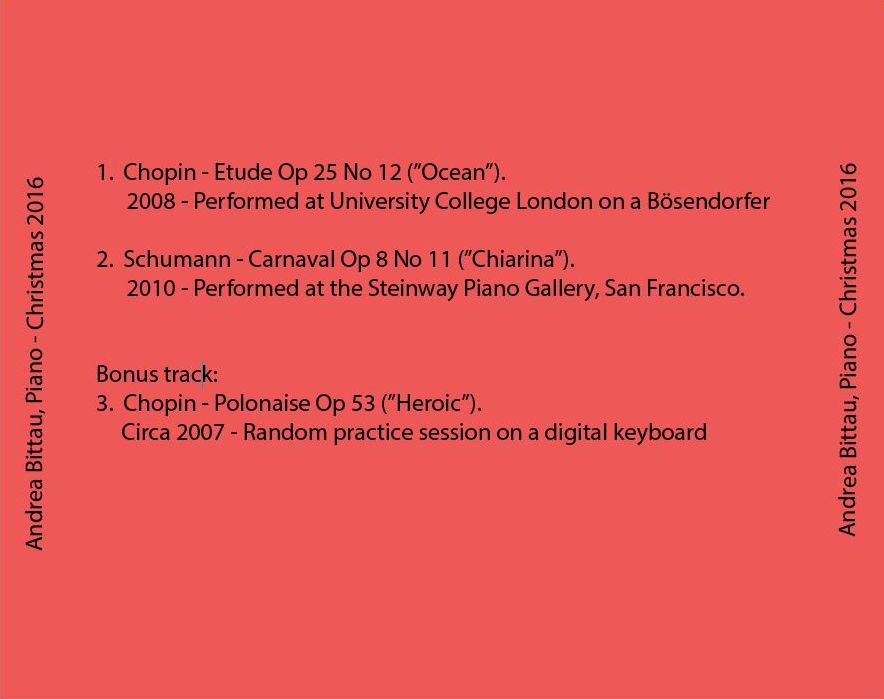
"La musica, una vita parallela di Andrea Bittau..."

















































